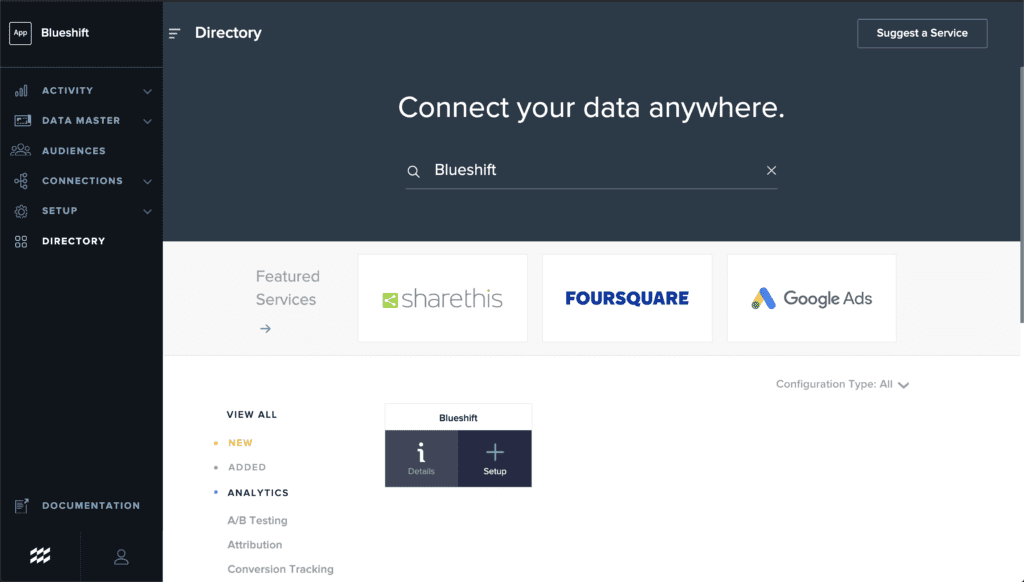Businesses today are more data focused than ever before. There’s transactional data, demographic data, and virtually infinite amounts of behavioural data. Add it all up, and you’ve got data from anonymous ad impressions to known customer purchases, all the way through to product usage and customer service. Customer data is a superset of all this data together.
Typically, this data is stored in silos, whether organisational or technological, making it very difficult for companies to provide consistent customer experiences across various channels and consumer devices.
Customer Data Platforms (CDP) centralises all the customer data coming into your organisation, regardless of what channel or device the customer used. It organises all the data you collect around the customer, rather than around the channel or device it was gathered from. The more data sources you have for the CDP to pull from, the more powerful it can be. A CDP is the beating heart of customer data that makes a Single Customer View possible.
Now, more than ever before, marketers need to build direct one-to-one trusted relationships with each of their customers. They need to turn these relationships into actionable customer insights that translate to higher conversions, better customer engagement, and stronger customer loyalty.
AMG Digital is the preferred GCC partner of two award winning Customer Data Platform (CDP) service providers, leading the modern-day Marketing Technology (MarTech) landscape globally
Marketing/Activation – Customer Engagement Platform

SALESmanago is a Customer Engagement Platform for impact-hungry eCommerce marketing teams who want to be lean yet powerful, trusted revenue growth partners for CEOs. Marketing in eCommerce has become the most exciting but also the most demanding area of business. The eCommerce marketers face huge fragmentation and growing costs of marketing technology solutions, reliance on IT, and other scarce expertise. This slows them down and decreases their impact. The solution for that is SALESmanago. No code, AI driven Customer Data Platform with natively built Omnichannel Execution, Analytics, Optimization Tools, and Marketing Intelligence features.
SALESmanago allows customers to gain an advantage through 6 principles:
- Customer Intimacy: A self-learning solution that leverages zero- and first-party data.
- The effect: Know your customers better than your competition. Increased loyalty. Authentic relationships.
- Precision Execution: Combining hyper-personalization of the omnichannel experience with predefined processes.
- The effect: higher CR, AOV, and CLV, and lower customer churn.
- Growth Intelligence: No-code design cuts dependency on IT.
- The effect: Full control of your revenue outcomes.
The blend of the above is a guarantee for each marketing team to be powerful, lean, and pragmatic.
Clients

Video Introduction for SALESmanago
Request a Demo
Infrastructure – Customer Data Platform

Infrastructure CDPs establish a new foundational data infrastructure layer to help teams move data freely and securely between various systems and applications in real time, while managing data quality and protecting consumer privacy. Using embeddable SDKs and APIs, these CDPs collect 1st-party data from multiple customer touch points (Mobile, Web, OTT, POS systems, and more).
Data is then cleansed and linked to individual customer profiles before it’s sent downstream to best-of-breed advertising, marketing, operational and analytics systems.
Post-implementation of these CDPs provide self-serve data routing capabilities to non-technical teams, such as Product, Marketing, Analytics, and Customer Support. Included in these capabilities is the ability to leverage predictive insights to create audience segments. Once built, audience segments can be connected to marketing engagement tools for personalised campaigns.

Clients

Video Introduction for mParticle
Request a Demo
What you need to know about a CDP and other Marketing Technologies:
01
How is a CDP different from Data Management Platforms (DMP) like Oracle BlueKai, Krux and Lotame?
DMPs support Web display advertising by maintaining a collection of Web browser cookies with attributes such as interests, demographics, and behaviours. Users select sets of cookies with desired attributes and send them to advertising systems, which deliver ads to those cookies when they appear on a Web site.
Key differences from a CDP are:
- DMP cookies are generally anonymous, whereas CDP records are linked to identified individuals.
- DMP data is a string of attributes, while CDPs store detailed lists of purchase transactions and Web behaviours.
- DMPs work primarily with Web data, while CDPs nearly always include data from offline systems such as CRM.
- Some DMPs have added CDP functions but it’s important to recognize that those are not what they were originally designed to do.
02
How is a CDP different from Data Warehouses like Amazon Redshift, Datadog and Alooma?
Data warehouses and data lakes are usually enterprise-wide projects, which means they are not tailored to marketing needs. Data lakes are collections of data, usually in the same form as the original source systems, while data warehouses process the raw data to make it more usable. But they often don’t include the cross-channel identity resolution needed to build a single customer view. Data warehouses are designed primarily to support analysis, not direct customer interactions. Among other things, this means they are usually updated daily, weekly, or less often, while CDPs usually ingest data in real time and make it available quickly if not instantly. It’s true that most CDPs use the same data storage technologies as data warehouses. The difference is the CDP does additional processing to make the data usable, while a data warehouse does not.
03
How is a CDP different from CRM Systems like Salesforce, Oracle and Adobe?
CRM systems exist primarily to engage with customers. They capture data generated during those engagements but aren’t designed to import large volumes of data from other systems. Nor are they built to unify that data by matching different identifiers. Their database designs are optimised for direct customer interactions, which needs a different structure than a Customer Data Platform (CDP) to run efficiently. When CDP data is used by CRMs, the CDP data is usually restructured and supplemented with indexes so the CRM can use it effectively.